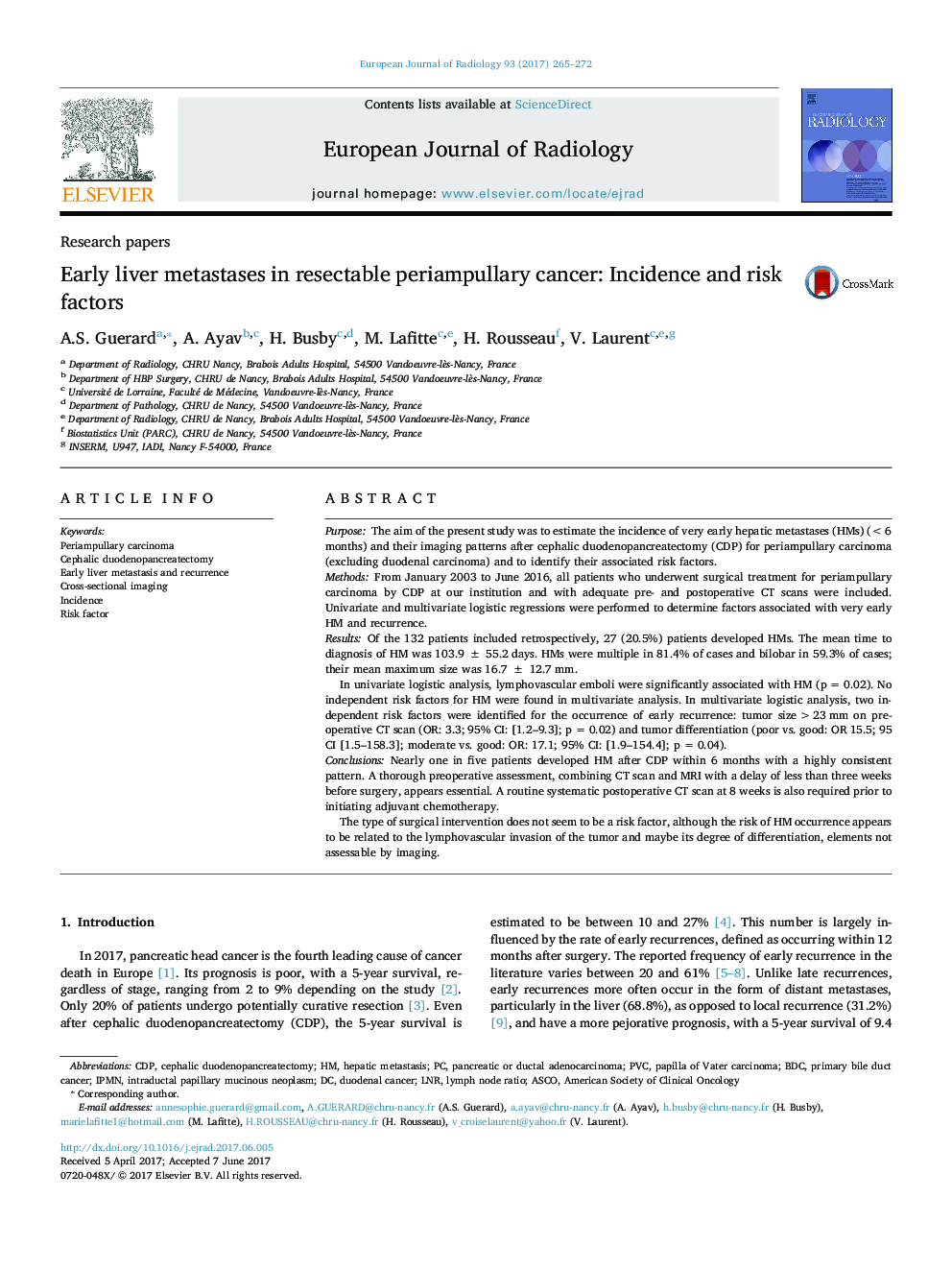| کد مقاله | کد نشریه | سال انتشار | مقاله انگلیسی | نسخه تمام متن |
|---|---|---|---|---|
| 5726052 | 1609727 | 2017 | 8 صفحه PDF | دانلود رایگان |
- Nearly one in five patients developed very early hepatic metastases (<6Â months) after cephalic duodenopancreatectomy for periampullary carcinoma.
- The diagnosis of secondary lesions should be considered in first-line treatment in the presence of multiple, small and hypointense lesions <2Â cm in size.
- Lymphovascular emboli were significantly associated with hepatic metastases.
- A thorough preoperative assessment, combining CT scan and MRI with a delay of less than three weeks before surgery, appears essential. A routine systematic postoperative CT scan at 8 weeks is also required prior to initiating adjuvant chemotherapy.
PurposeThe aim of the present study was to estimate the incidence of very early hepatic metastases (HMs) (<6 months) and their imaging patterns after cephalic duodenopancreatectomy (CDP) for periampullary carcinoma (excluding duodenal carcinoma) and to identify their associated risk factors.MethodsFrom January 2003 to June 2016, all patients who underwent surgical treatment for periampullary carcinoma by CDP at our institution and with adequate pre- and postoperative CT scans were included. Univariate and multivariate logistic regressions were performed to determine factors associated with very early HM and recurrence.ResultsOf the 132 patients included retrospectively, 27 (20.5%) patients developed HMs. The mean time to diagnosis of HM was 103.9 ± 55.2 days. HMs were multiple in 81.4% of cases and bilobar in 59.3% of cases; their mean maximum size was 16.7 ± 12.7 mm.In univariate logistic analysis, lymphovascular emboli were significantly associated with HM (p = 0.02). No independent risk factors for HM were found in multivariate analysis. In multivariate logistic analysis, two independent risk factors were identified for the occurrence of early recurrence: tumor size >23 mm on preoperative CT scan (OR: 3.3; 95% CI: [1.2-9.3]; p = 0.02) and tumor differentiation (poor vs. good: OR 15.5; 95 CI [1.5-158.3]; moderate vs. good: OR: 17.1; 95% CI: [1.9-154.4]; p = 0.04).ConclusionsNearly one in five patients developed HM after CDP within 6 months with a highly consistent pattern. A thorough preoperative assessment, combining CT scan and MRI with a delay of less than three weeks before surgery, appears essential. A routine systematic postoperative CT scan at 8 weeks is also required prior to initiating adjuvant chemotherapy.The type of surgical intervention does not seem to be a risk factor, although the risk of HM occurrence appears to be related to the lymphovascular invasion of the tumor and maybe its degree of differentiation, elements not assessable by imaging.
Journal: European Journal of Radiology - Volume 93, August 2017, Pages 265-272
